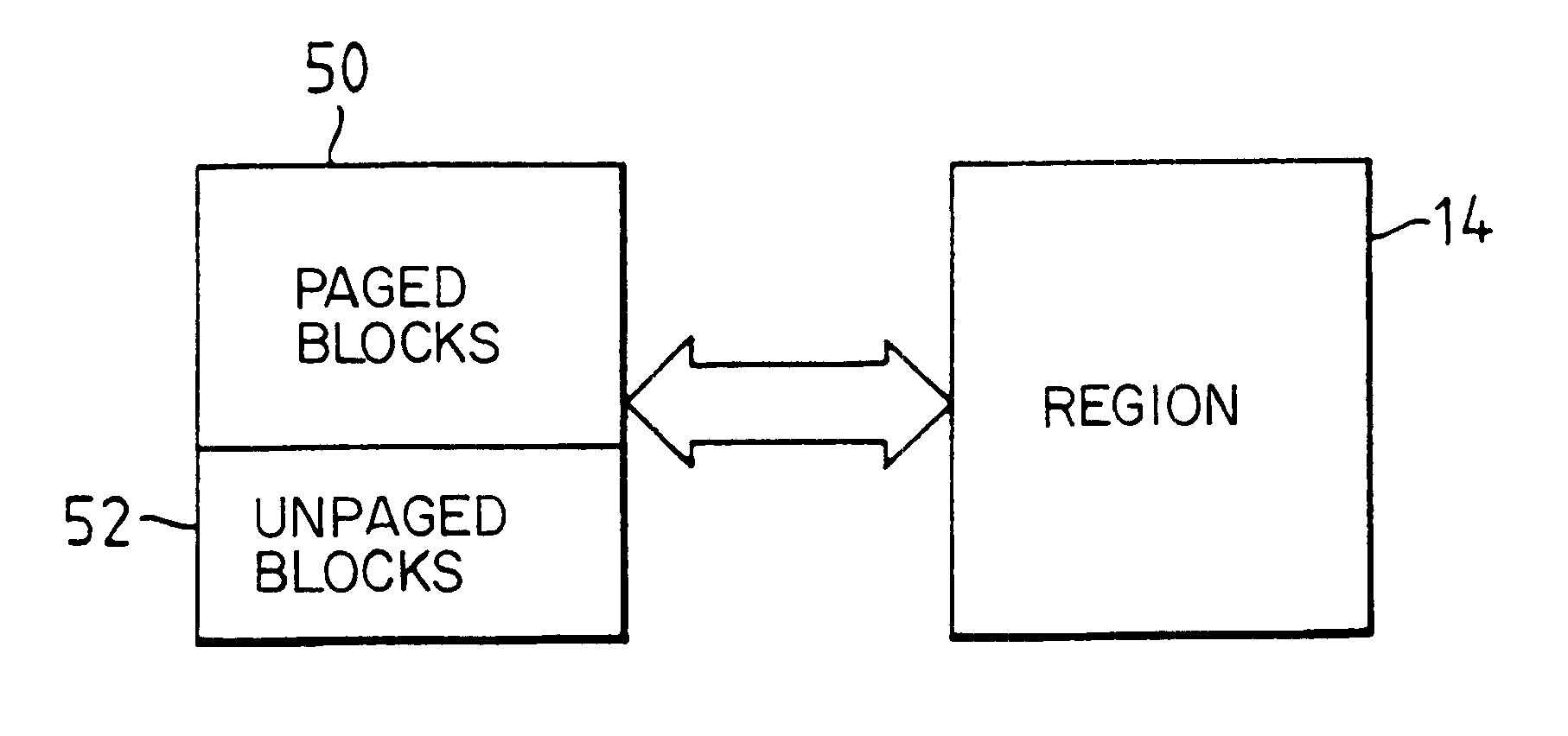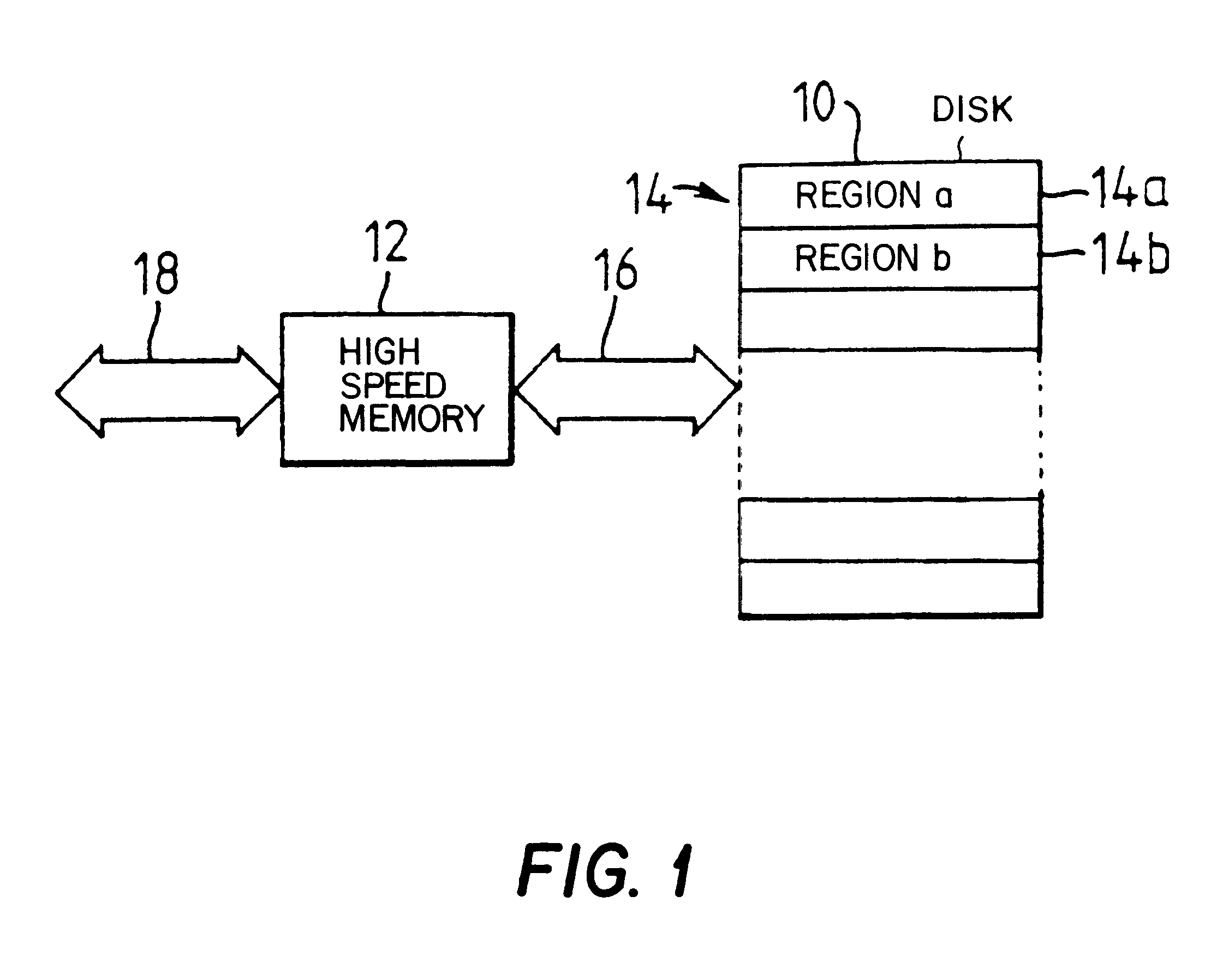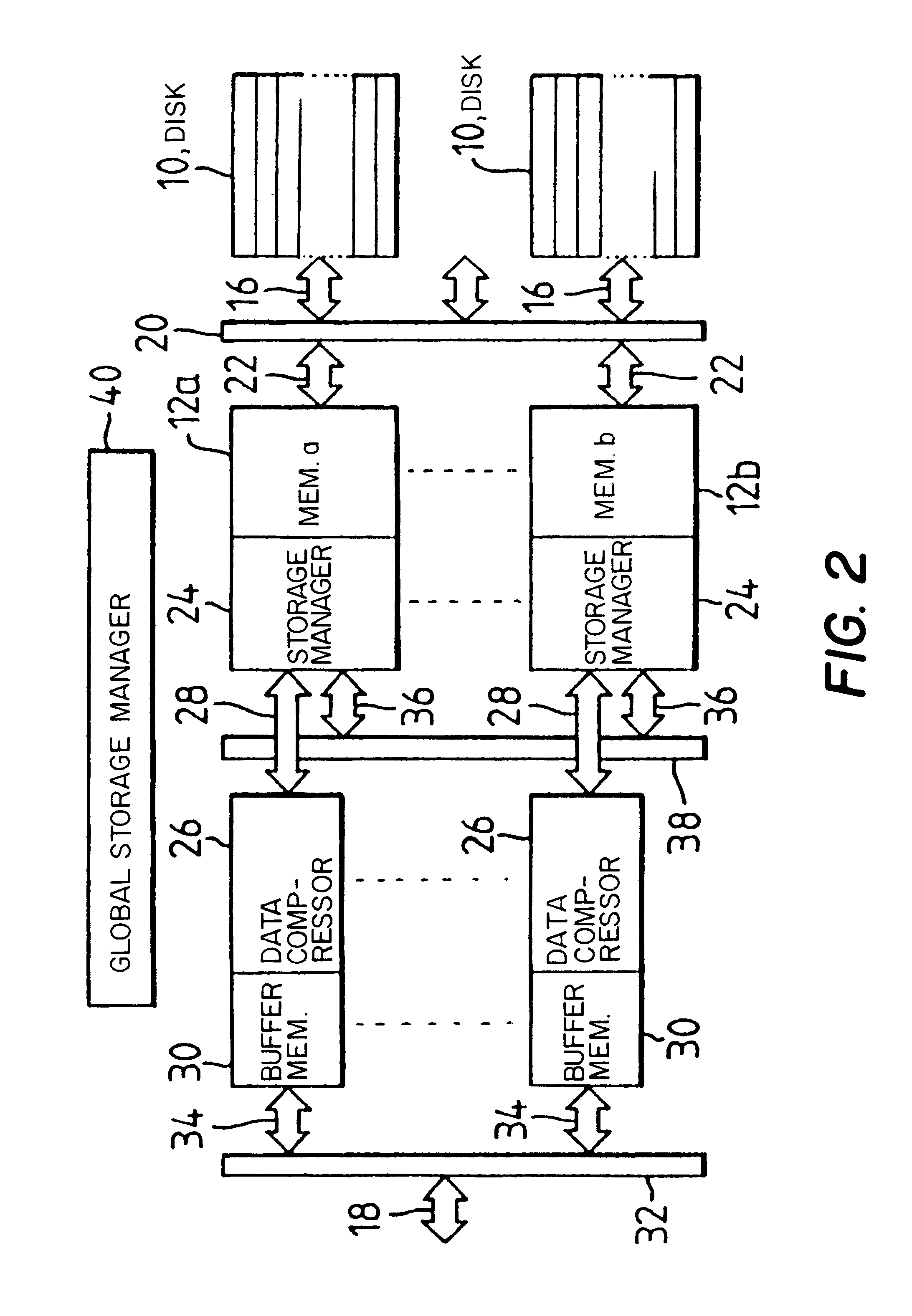Data storage system storing data of varying block size
a data storage system and block size technology, applied in the field of data storage systems, can solve the problems of inability to store data for each logical block, inability to use certain blocks in the physical address, and inability to reduce the size of the data after compression, so as to reduce the amount of storage space required for a block, the effect of minimising the amount of storage space used
- Summary
- Abstract
- Description
- Claims
- Application Information
AI Technical Summary
Benefits of technology
Problems solved by technology
Method used
Image
Examples
Embodiment Construction
When data compression techniques are applied to a block of data, the compression which is achieved and hence the compressed block size vary widely as a function of the characteristics of the data. Some types of data such as binary object code contain very little redundancy and are only marginally compressible whilst other forms such as image data may be compressed to less than one tenth of their original volume. Therefore, although block sizes before compression are of a fixed size block sizes in a data storage system after data compression may vary over a very wide range. An efficient storage management arrangement must be able to cope with the dynamic nature of the block size distribution.
FIG. 1 shows a basic data storage system. It has a store which in this embodiment is a magnetic disk drive 10 connected to a high speed memory 12 which acts as a buffer for all data input / output operations to the magnetic disk drive 10. The system of FIG. 1 shows the principles of partitioning an...
PUM
| Property | Measurement | Unit |
|---|---|---|
| physical | aaaaa | aaaaa |
| size | aaaaa | aaaaa |
| physical size | aaaaa | aaaaa |
Abstract
Description
Claims
Application Information
 Login to View More
Login to View More - R&D
- Intellectual Property
- Life Sciences
- Materials
- Tech Scout
- Unparalleled Data Quality
- Higher Quality Content
- 60% Fewer Hallucinations
Browse by: Latest US Patents, China's latest patents, Technical Efficacy Thesaurus, Application Domain, Technology Topic, Popular Technical Reports.
© 2025 PatSnap. All rights reserved.Legal|Privacy policy|Modern Slavery Act Transparency Statement|Sitemap|About US| Contact US: help@patsnap.com



